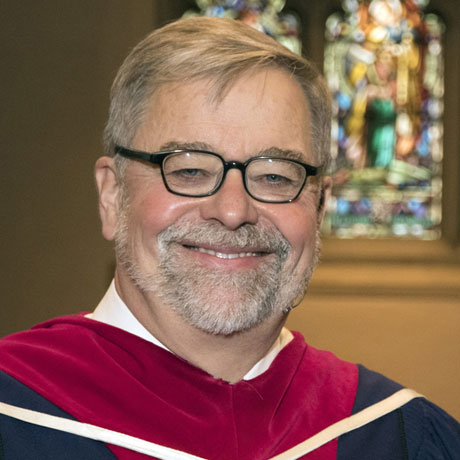First Congregational Church
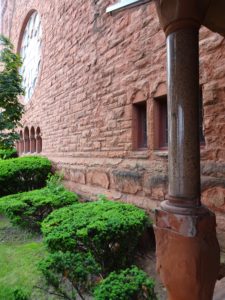
The 1880’s Richardson Romanesque First Congregational Church presented a wonderful contrast following the visit to the Gothic Revival style of St. Paul’s Episcopal Cathedral. The sandstone exterior of the church with its rounded arches is set apart by its beautiful porch and a 120’ tower modelled after early Christian and Romanesque bell towers. At the peak of the tower is an ‘8 high bronze stature of the Archangel Uriel. Perhaps the most striking feature in the Sanctuary is undoubtedly with the ribbed vault ceiling feature large canvas murals of the four evangelists painted in the Beaux Arts style by the artist, Lyle Durgin who had studied in Paris. The low half domed chancel decorated with Greek crosses also catches the eye.
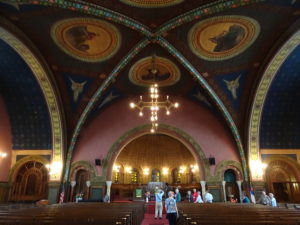
The church is stunning, but also warm and inviting as were all the people we met. It’s history too is rich for even before moving into its current building the congregation played a very significant role as a station on the Underground Railroad. This important history is embraced by the congregation who offer a museum featuring interaction with character actors.
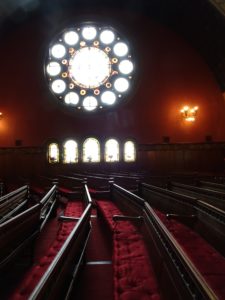
However, the exterior stone is suffering terribly from erosion to the point the porch was closed. And sadly it is not just the stone that is suffering. As in so many churches today the membership too has fallen to below 100 people on a typical Sunday. When the numbers fall the buildings often suffer as budgets can’t keep up with both the salaries and the repairs. As I sat at the front alongside my co-leader, Corey Keeble, I felt a sadness. I was noticing some of the water damage on the interior walls and hearing complaints from people that the fans were too loud and they couldn’t hear. What’s more, the organ was apparently not functioning. You could tell the people loved their church, but one couldn’t help but wonder about the future of this magnificent Christian sanctuary.
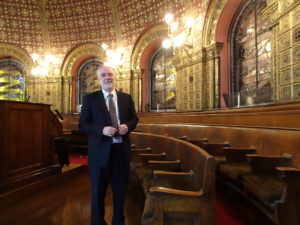
I was silently ruminating on some of these distractions when I heard Corey mention the prominence of the circle motif in the Sanctuary. I happened to have been looking at the square panes of glass in the rear doors when he said it and so I thought, ‘Circles? I see squares.’ But with Corey’s mention of circles I started to look around and in no time was finding them almost everywhere. There were circles in the stained glass, in fact circles inside circles. There were circles in the ceiling by the hundreds if not more. The quatrefoils carved into the ends of the pews were circles as were the shapes painted into the chancel walls where circles were linked into circles. I started to count and reached at least 4,000, but then the church administrator, Chelsey Rayford returned to the sanctuary and I asked her how many circles there are. “Too many to count,” she replied. I thought of Abraham and Sarah barren in their later years and convinced they had no future until God told them to count the stars in the nighttime sky. When he couldn’t count them all, God said, “So shall your descendants be!”
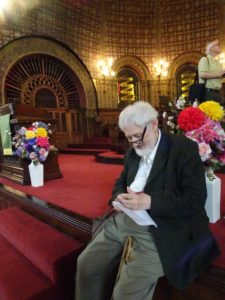
Circles are signs of the eternal, for a circle never ends. The unbroken circle is also a reminder of the promises and blessings of God which will never end. When I told people there must be between 4,000 and 5,000 circles, they too started to count. I was soon corrected. Others were estimating between 8,000 and 10,000 circles. When we are distracted and give way to discouragement we sometimes lose sight of the blessings of this life all around us. I left the beautiful First Congregational Church and the wonderful people convinced, they do have a future.
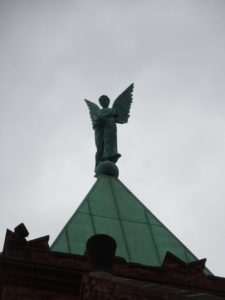
One of our pilgrims, Rob Mee, a gifted musician and photographer has posted some absolutely remarkable photos of this sacred space along with the others we visited and can be viewed on his website at: https://focusonmee.com/detroit-michigan/
Grace and Peace,
Peter



